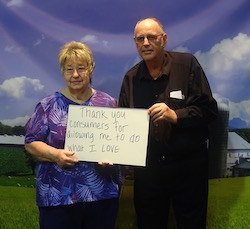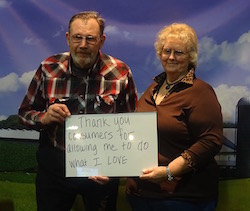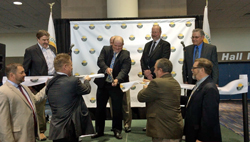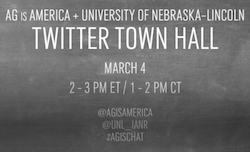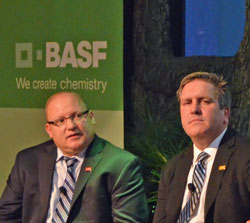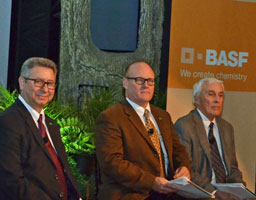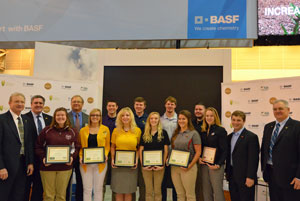 A brand new crop of young people received scholarships at the 2016 Commodity Classic from three organizations and BASF.
A brand new crop of young people received scholarships at the 2016 Commodity Classic from three organizations and BASF.
The American Soybean Association (ASA), National Corn Growers Association (NCGA), and the National Wheat Foundation (NWF) all joined in the presentation of scholarships to assist promising individuals with their future agriculture academic endeavors.
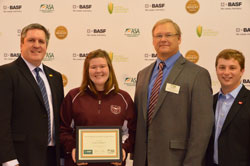 For the 10th year in a row, BASF and ASA teamed to present the $5,000 ASA Secure Optimal Yield (SOY) Scholarship, which was received by Kara Berrey of Carrollton, Missouri. She will pursue a bachelor’s degree, and eventually a master’s degree, in agriculture education at Missouri State University.
For the 10th year in a row, BASF and ASA teamed to present the $5,000 ASA Secure Optimal Yield (SOY) Scholarship, which was received by Kara Berrey of Carrollton, Missouri. She will pursue a bachelor’s degree, and eventually a master’s degree, in agriculture education at Missouri State University.
Listen to an interview with Kara here: Interview with Kara Berry, SOY Scholarship Winner
This year also marks a decade of partnership between BASF and NCGA to provide the William C. Berg Academic Excellence in Agriculture scholarships to outstanding undergraduate or graduate students pursuing degrees in agriculture.
The program awarded scholarships of $1,000 each to the following students:
Andrew Lauver of Rockwell City, IA – graduate student of agribusiness at Kansas State
Bethany Mordhorst of Ute, IA – graduate student of animal science at the Univ. of Missouri
Breanne Brammer of Gallatin, MO – graduate student of agriculture education at Univ. of Missouri
Katie Peterson of Grove City, MN – sophomore at Gustavus Adolphus College
Leah Schwinn of New London, OH – junior at The Ohio State University
In its fourth year, the NWF Jerry Minore Memorial Scholarship honors both high school and college students who demonstrate success and motivation inside and outside the classroom.
Recipients of the NWF Jerry Minore Memorial Scholarship include:
Caleb Brannon of Puryear, TN – a senior at Murray State University, Kentucky
Logan Simon of Columbia, MO – a junior at the University of Missouri
Clay Schemm of Sharon Springs, KS – a sophomore at Kansas State University
Samantha Wander of Bellville, OH – a freshman at The Ohio State University






